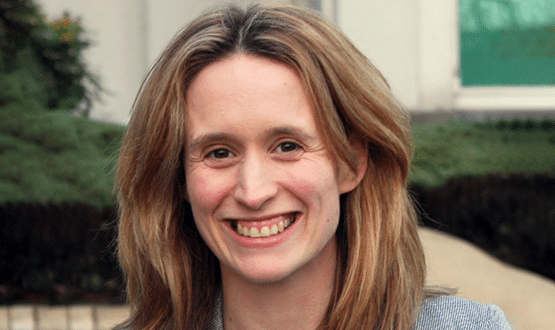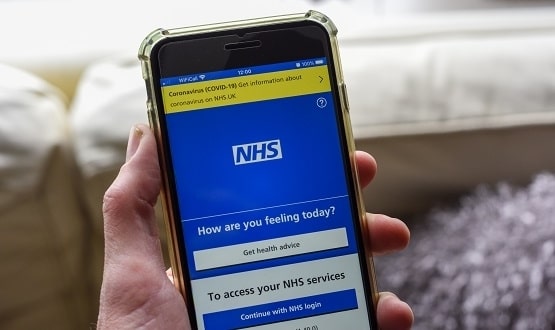Time to close the gender gap in technology
- 8 March 2018

Today on International Women’s Day, Eve Roodhouse, director of implementation at NHS Digital, shines a light on how we can close the gender gap in the health technology sector and promote a more diverse workforce.
There has never been a more exciting time to be involved in digital transformation across health and care and it’s more important than ever to ensure that the workforce leading and delivering digital transformation is truly diverse.
As the health and care system faces increasing demand, digital transformation will help manage the impact on services. Technology will continue to help provide higher quality care and services which are quicker and more convenient to access.
It will increasingly empower people to take more control of their health and care by giving them secure online access to clinicians, personalised health information and digital tools and advice.
Gender imbalance in technology
But we will only release the true potential of digital transformation if the leaders and the workforce behind it are truly diverse. For example, evidence points to new technologies such as artificial intelligence facial recognition working better for white people due to the mix of people working on its development.
At NHS Digital, we are committed to improving diversity in our workforce. On International Women’s Day we are reflecting, in particular, about achieving an improved gender balance – a challenge across the technology sector, not just for us.
To illustrate, research by PwC found that a career in technology was the first choice for only 3% of female students. Just over a quarter said they would consider a career in the field, compared to 61% of male students.
We recently published a pay gap report for our organisation showing a median pay gap of 14% between male and female salaries.
Culture change
A significant cause of this is that, on average, men still occupy more of the senior pay bands than women in our organisation. So, we have much to do.
Take up of shared parental leave is very low at NHS Digital.
Health issues which affect women, such as the menopause, are often still taboo in the workplace yet contribute to sickness absence. Research from the British Menopause Society found that 45% women felt their menopause symptoms had a negative impact on their work.
However, almost half of those who needed to take a day off work due to menopause symptoms wouldn’t tell their employer the real reason.
These are some of the issues which can result in fewer women in the workplace, especially in male-dominated sectors.
Women’s Network
So, within our organisation, we are taking action.
Our chief executive Sarah Wilkinson has spoken of her determination to increase the number of women in senior roles and to ensuring that NHS Digital is a fantastic place to work, compatible with a rich life outside work for those who have families, for those with carer responsibilities and for those who simply have other interests in their lives.
We have set up the NHS Digital Women’s Network to support female staff to overcome the issues they face and inspire them to achieve their potential.
The network is working in partnership with human resource and organization development departments to deliver our ambitious plans to address the gender pay gap and is championing other initiatives.
Mentorship and collaboration
One of the network’s latest initiatives has been piloting a new mentoring scheme.
We have developed a partnership with One HealthTech, which aims to celebrate and promote the talent and work of women and people from diverse backgrounds in this field.
Thanks to this link-up, our staff have access to professional networks including the trailblazers in health technology, and greater opportunities to present their valuable work to the wider world.
We want to shout about our brilliant employees, so we encouraged nominations to the Women in IT Awards – and were delighted that senior project manager Marta Raper won the Editor’s Choice category at the event earlier this year.
We are attracting good female cohorts into our successful graduate and apprenticeship schemes. The proportion of female trainees, which includes graduates and apprentices, has risen from 10% in 2014 when the schemes started to 49% now.
#Pressforprogress
This is all positive, but still more can be done.
The theme for this year’s International Women’s Day is #pressforprogress, calling for continued focus and action to achieve gender parity.
I’ve made a personal commitment to continue to #pressforprogress within NHS Digital and beyond to address the barriers which still exist for women. I am committing to forge positive visibility of women and support colleagues and peers who are visible to others.
This will also change things for the better for men, as it’s vital to give everyone a pull up the ladder.
We want to close the gender gap in the health technology sector to put everyone on an equal footing and to ensure all those working in this crucial area are valued and recognised for the wonderful work they do.
Eve Roodhouse is director of implementation and digital environment at NHS Digital.





2 Comments
As someone who has worked in IT/ technology all my life and is now semi retired, I have to say the late 70s and early 80s it was a much better gender split in technology. 50/50 in my department. This is because engineers (largely men) didn’t seem to think computing would “catch on”. As soon as it became a well paying and interesting career, men flooded in and women seem to have been marginalised. It’s going to be hard work to redress the balance but worthwhile. Technology is a great career choice for women. Utterly fascinating.
I take the point Amanda’s is making re nursing.
So let me get this straight:
‘Research by PwC found that a career in technology was the first choice for only 3% of female students’
and we supposed to be shocked and dismayed that there isn’t a 50/50 split in the workplace? I know many strong willed independent and intelligent women that are successful in many fields and have not been held down by some all-pervading sexism in the workplace. Women just aren’t as interested in I.T as men, in general!
Where is the call to action to create 50/50 splits for genders in nursing?
Comments are closed.